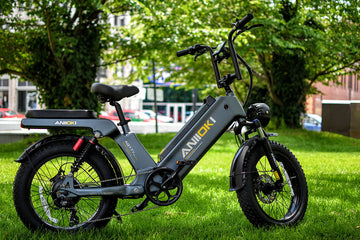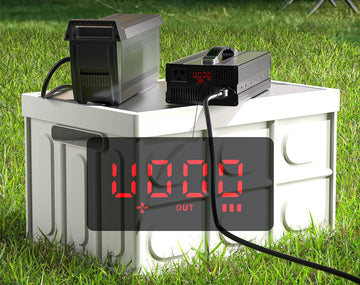In today's tech-driven world, lithium-ion batteries have become the powerhouse behind various devices, from smartphones and laptops to electric vehicles and grid-scale energy storage systems. Electric bicycle enthusiasts, in particular, have reaped the benefits of these batteries, which boast advantages over traditional options like high energy density, low self-discharge rates, and prolonged cycle life. However, with the surging popularity of lithium-ion batteries, it's crucial to prioritize safety to fully enjoy their benefits.
Understanding Lithium-ion Battery Safety
Lithium-ion batteries have garnered widespread popularity across a myriad of applications. Their remarkable energy density and minimal self-discharge rate have solidified them as indispensable power sources in our contemporary existence. These unobtrusive energy dynamos, composed of a cathode, an anode, and an electrolyte, orchestrate the seamless movement of lithium ions between electrodes, channeling this intricate dance into a steadfast electrical current that powers our world.
However, despite their pervasive presence, lithium-ion batteries come hand in hand with specific safety complexities. Among the foremost apprehensions is the specter of thermal runaways, a phenomenon that lurks when these batteries become overwhelmed. This danger arises as a battery heats up excessively, setting off a chemical cascade that, in turn, generates additional heat, laying the groundwork for potential fires or even explosions to ensue.
In response, manufacturers have ardently crafted an array of design nuances and safety fortifications to avert the peril of thermal runaways and analogous safety predicaments. Innovations encompass an arsenal of safeguards, such as vigilant temperature sensors, judicious shutdown mechanisms, and the integration of inherently safer components. The cautious deployment of temperature sensors, shutdown separators, and electrolytes imbued with flame-retardant properties stands testament to our determination to tread the path of security.

Pro Tips For Charging Your E-bike Battery
Charge the Battery After Each Use
One of the cardinal rules of e-bike battery care is to charge the battery after each use. While it might be tempting to leave the battery partially charged, regular charging helps maintain the overall health of the battery. When your ride is over, take a few minutes to plug in your e-bike and allow it to recharge. This practice not only ensures that your bike is ready for your next adventure but also extends the battery's lifespan.
Use the Correct Charger
Using the correct charger is vital to the health of your e-bike battery, when you buy an e-bike make sure you ask about those chargers that are suitable for e-bikes, if you use a mismatched charger it may have adverse effects. Avoid using third party or universal chargers that may not provide the required voltage and current as this can damage the battery and compromise safety.
Do Not Overcharge or Undercharge the Battery
Overcharging and undercharging are two significant enemies of battery longevity. Modern e-bike batteries often come equipped with sophisticated battery management systems that help prevent overcharging. However, it's still advisable to unplug the charger once the battery reaches full capacity. Similarly, avoid allowing your battery to drain completely, as this can lead to irreversible damage. Striking a balance between charging and discharging helps prolong the battery's lifespan and overall performance.
Store Batteries Correctly
Proper storage is crucial, especially if you plan to store your e-bike for an extended period. Ideally, store the battery in a cool, dry place away from direct sunlight and extreme temperatures. If you won't be using the bike for a while, ensure the battery has a charge level between 30% to 60%. This range helps prevent the battery from becoming fully depleted or overly charged during storage, which can both affect its long-term health.

Proper Storage Practices For Your Lithium-ion Battery
Temperature Control: Preserving Optimal Conditions
Temperature plays a pivotal role in the well-being of your lithium-ion battery. Store it in an environment with a moderate temperature range, ideally between 50°F to 77°F (10°C to 25°C). Extreme heat or cold can damage the battery's internal chemistry, affecting its overall performance and lifespan. By maintaining an ambient temperature, you're creating a nurturing environment that safeguards your battery's health.
Avoid Humidity: Dry and Protected
Humidity is a silent adversary that can compromise your battery's integrity. Moisture can seep into the battery's casing, leading to corrosion and potential damage to internal components. Opt for a dry storage area that shields your battery from moisture and prevents the onset of corrosion. Your lithium-ion battery will thank you for providing a protective haven.
Avoid Storing at Full Charge
Storing your lithium-ion battery at full charge might seem prudent, but it can actually impact its long-term health. Aim to store the battery at a charge level between 30% to 60%. This range strikes a balance between keeping the battery active and preventing overcharging, which can stress the battery and lead to capacity loss. It's a simple yet effective strategy for prolonging your battery's lifespan.
Check Charge Regularly
Even during storage, it's advisable to periodically check the battery's charge levels. If it drops below 30%, give it a gentle top-up to keep it within the optimal storage range. Modern lithium-ion batteries often have a self-discharge mechanism, and by maintaining an appropriate charge level, you're ensuring that the battery remains healthy and ready for action when you're ready to ride again.
What is an EV Battery?
An electric vehicle (EV) battery (including those used in e-bikes) is a rechargeable energy storage device. It uses lithium-ion technology to store and provide energy for vehicle propulsion. These batteries are designed for high energy density and efficient power transmission.
The batteries used in the AQ177 Pro Max eBike and A8 Pro Max eBike are EV batteries, which last longer than typical eBike batteries, require minimal maintenance, and are durable EV batteries, making your eBike ownership hassle-free and cost-effective.
Conclusion
Lithium-ion ebike batteries are an efficient and convenient way to power your e-bike, but they can pose a fire risk if not handled properly. Following the guidelines for safe charging, storage, and battery usage, you can minimize the risk of a fire or other emergency. If you suspect an emergency related to your ebike battery, take immediate action and seek professional assistance.






